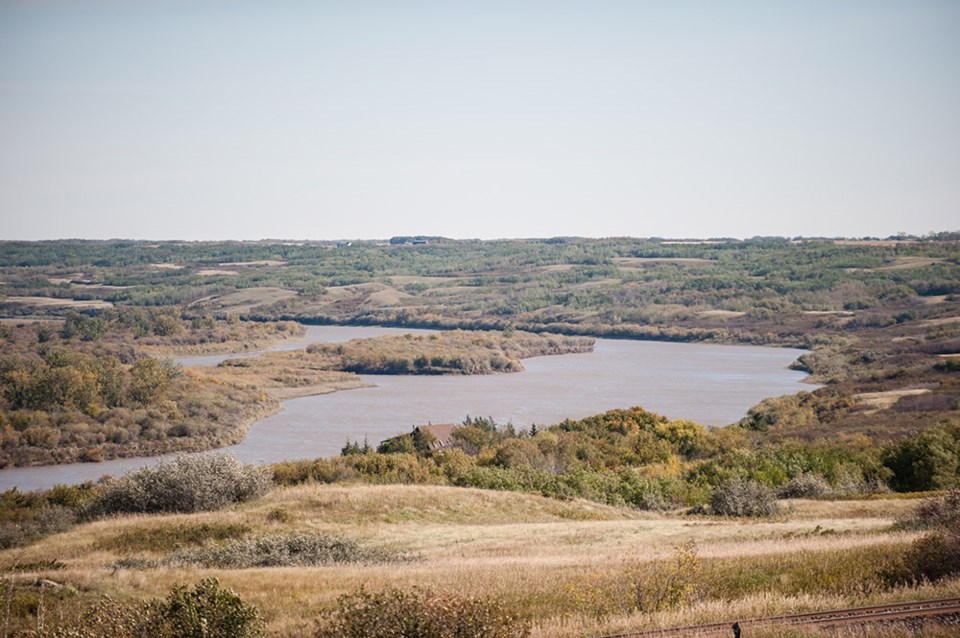Regina – It’s going to take a little while longer to find out why a Husky Energy pipeline leaked into the North Saskatchewan River on July 21.
On Oct. 20 Husky asked for, and was granted, a 30 day extension by the Ministry of the Economy in reporting its findings.
Doug MacKnight, assistant deputy minister of the petroleum and natural gas division with the Ministry of the Economy, said on Oct. 21, “Husky has requested and been granted a 30 day extension for the submission of certain technical reports related to the incident under section 21(2) of The Pipeline Regulations, 2000. Their request was granted.
“The additional time was needed to complete a metallurgic report on the failed pipeline as well as geotechnical report on lands where the failure occurred. Both of these reports are being prepared for Husky by a third-party engineering firm. Based on these technical reports, Husky will be providing its assessment of the cause of the July 21 incident on or before Monday, Nov. 21, 2016. Husky’s final report will include the background studies supporting its conclusions as to the cause of the failure.”
Husky has submitted an additional report on the incident, which was released to the media by the province on Oct. 21.
The total ground area of the spill was reported as 41,500 square metres, although MacKnight noted, “We have work to do to understand how Husky actually calculated it. Obviously, we need to true it up with our own work in the investigation.”
All of that area was off-lease. The volume, as earlier reported, was 225 cubic metres, plus or minus 10 per cent. The recovered amount is listed as 210 cubic metres, and the lost amount is 15 cubic metres.
There was a total of 4,303 cubic metres of soil recovered, 551 cubic metres of water and 349 tonnes of vegetation.
“It’s important to note that Husky’s final report on the incident, which is due in November, is just one part of a broader investigation we’re undertaking with regard to the cause of the failure, MacKnight said. The Ministry of Economy, Ministry of Environment, Water Security Agency and Attorney General’s office are all involved in the investigation and overseeing Husky’s recovery work. Corporate records have been collected and analyzed and Husky officials and staff have been interviewed.
Skystone International, a Calgary engineering firm, has been providing advice to the Ministry of the Environment throughout this time. MacKnight said, “Skystone has considerable expertise in major pipeline investigations in Canada and has been providing advice to the investigation group at each stage in the process.”
Skystone has also been contracted to do additional research or studies to validate information provided by Husky.
“Overall, the investigation is proceeding quite well. There’s still a lot of work ahead of the technical team in terms of analyzing the information collected, documenting the findings, and preparing the public report,” he added.
The ministry is not providing timelines or preliminary findings at this time.
Ash Olesen, acting executive director for the environmental protection branch with Ministry of Environment, said, “We have effectively moved from spill response to a remediation and reclamation status. To that end, the response team has demobilized the cleanup sites, including the removal of equipment and personnel.”
There will be monitoring over the winter. He added that 93 per cent of the oil spilled has been recovered. More than 900 kilometres of shorelines was assessed, including both sides of the river and islands, from the spill entry point to a little past Prince Albert. More than 1,000 hot spots have been cleaned up as a result of that assessment.
“We consider the cleanup and assessment complete for 2016. That activity will resume in spring of 2017. This is all part of the scheduled discontinuation of cleanup efforts as winter approaches,” Olesen said.
Pipeline Newsasked what sort of activity was expected in the springtime, and how whatever remains would be affected by ice and snow in the winter. Olesen said, “We’ll resume the shoreline cleanup and assessment protocols we’ve established with Husky for the 2016 season that will actively resume in 2017. The degree and intensity of that shoreline assessment will be a function of whether there is or isn’t more observable sheen, an potentially the dispersement of any additional oil. That remains to be seen. But effectively the same activity we saw this summer/fall will resume in 2017, weather permitting.
Pipeline Newsthen asked how much, if anything, they expected to retrieve in the spring, nine months after the initial spill, and with only seven per cent unrecovered? Olensen replied, “The expectation is that if there is anything to be retrieved, we will be actively requiring Husky to do so. It is everyone’s expectation, and hope, that given 93 per cent recovered, there isn’t much to see. But again, we’ll see.”
Sam Ferris with the Water Security Agency noted Prince Albert began using its river water intake on Sept. 19, the week following the all clear was given by the WSA. Additional water sampling has been requested, and no petroleum hydrocarbons have been detected. The city is also using additional powder-activated carbon in its water treatment process.
Melfort began re-using their intake on Codette Reservoir on Sept. 16 and has refilled its reservoir. No hydrocarbons have been detected there, either.
North Battleford was still relying on using its groundwater treatment plant (with four additional new wells) and its water supply line from the Town of Battleford.
“The construction of a previously planned pre-filtration system has not yet started, but equipment is being purchased and preliminary plans are in place to have it installed,” Ferris said.
Dredging of the river near the surface water intake was delayed and scheduled to begin Oct. 24. The dredging was required due to natural siltation of the river and sand bar formation. This was supposed to happen in July, but the oil spill caused the delay.



